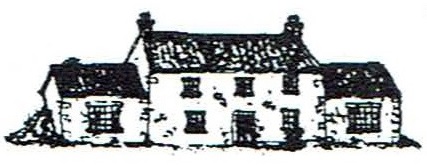AN IRISHMAN'S DIARY - KEVIN MYERS
An Irishman's Diary - KEVIN MYERS
Sat, Jun 10, 2000Look at the limewash on the wall of cottage; look at the plaster outside and within. For in the beginning were the tiny creatures of the ocean of the Devonian period - the crinoids, the rachiopods, the tribolites, swimming in vast masses, almost more measureless than the atoms of the stars, 400 million years ago. They perished in their billion billions, over millions of years, their molecular skeletons falling to the seabed and gathering like dust; grain upon grain, ounce upon ounce, pound upon pound, until the humours of the globe, applying enormous pressures over the millions of years that form geology's gestation time, produced limestone in inexhaustible quantities.
Which brings me to an architectural salvage yard on the Wicklow side of the county boundary with Carlow: Architectural Artifacts, run by Ed Byrne, who was rescuing the orphaned chimney pots and abandoned timbers and unwanted slates of Irish houses long before it became a fashionable business. He is a man of numerous parts: by training an engineer, by instinct a conservationist and populariser of ancient skills and ancient ways. His current - and I daresay abiding - love is lime.
Limestone
It is hard to imagine what life on this planet would be like without limestone. When burnt, it is the source of cement; but for many centuries before cement, limestone was burnt at a lower temperature to create one of the most elegantly simple and functional building minerals available to mankind - lime. The Romans were masters of lime, and the structures they caused to be created from the fossilised citizens of an ancient sea stand to this day.
Lime is not just a traditional building material, down through the years; in many respects, it is a superior one. For unlike cement, which is rigid and non-porous and which seals and blocks a wall as thoroughly as plastic, lime is flexible and it breathes. Both air and water can pass through its pores. And because it sets so slowly, leaving a hard crust outside a still-moist interior, lime can heal its own scars. A crack in a lime mix will allow water and carbon dioxide to enter it. They will not enlarge the crack, as they would do concrete, but they recruit material from the unset lime, and seal and heal what might in concrete be a fatal fissure.
One particular lime which arouses a deep passion from those involved, not merely for conservation purposes, but for building anew in the old way, is hydraulic lime. What makes hydraulic lime so perfect for Irish conditions is its impurity. These naturally occurring silicate and aluminate intrusions change the nature of the lime, enabling it to set under damp conditions; and even while it has hardened on the outside, inside it is still liquid, like a camembert within its rind. (Paradoxically, Irish limestone is too pure for the making of the lime which is perfect for Irish conditions.)
Native virtues
For all its native virtues, lime has certain problems. For one, it is more expensive than cement: but since one uses it but once in a lifetime, after which it remains almost a living, breathing protective and permanent skin on the house, the difference in cost is minimal. Another problem: builders are not used to working with it these days; but just as they have learnt to cope with new materials, might they not also learn to cope with old ones too? Problem three: its use, particularly across the water, has come to reek of the smugness of designer-authenticity and National Trust piety. It is the politically correct building material for the eco-friendly conservationist.
It is absurd to gentrify lime, to serve it in small pots like foie gras. It is a demotic dish, used by peasants and lords alike, and pound for pound actually cheaper to make than cement, though the sheer scale of the cement business today confers huge economies of scale. Lime putty, made from that dangerous stuff quicklime, is used to plaster the inside of a house; hydraulic lime to cover the outside. And because of its pores and its respiration, lime controls damp and permits air to enter a house - which concrete, of course, cannot; hence the ubiquity of those abominable whistling air vents in the modern house.
Ed Byrne has acquired half-a-dozen diplomas in building, timber, plaster and stone conservation from West Dean College in England. He still deals in architectural salvage in his yard outside Tullow; but his main business now is lime, whose constituents reach back to that time before seas sensed the flap of fin or air moved to the beat of wing, and which, baked and burnt into submission, produces a wonderful, flexible, home-making material.
Conservation
Some of the finest conservation projects in Ireland - such as the quite wonderful Ardbracken House in Meath - are using Ed Byrne as a lime consultant. The other week, Ireland reputedly ran out of cement, such is the frenzy of building across the country. How many of the houses being hurled together today are a decade away from abiding problems of damp and cracks and mildew? And will our fevers ever abate enough to restore to their proper place in our homes our old friends, the crinoids, the rachiopods and tribolites who first swam in Devonian depths four hundred million years ago, and who wait today in limestone beds for us to restore them to our hearts and homes?
TO VIEW THE ARTICLE IN ITS ORIGINAL FORMAT CLICK HERE

